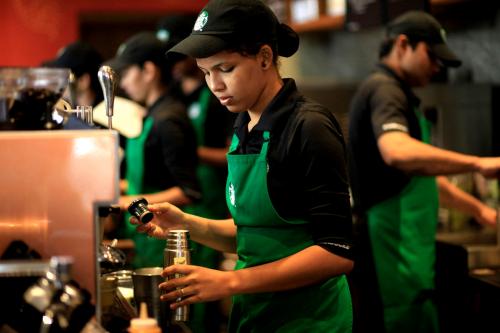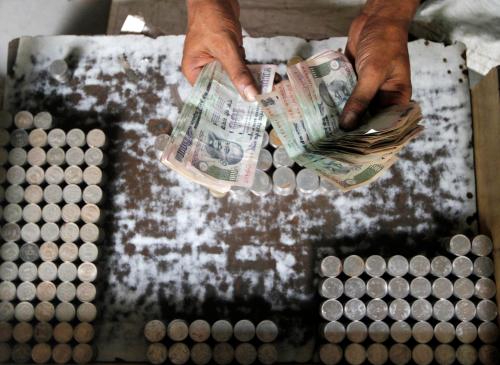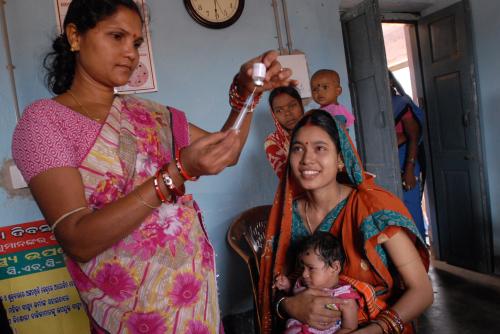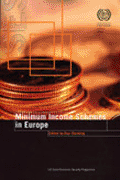Content from the Brookings Institution India Center is now archived. After seven years of an impactful partnership, as of September 11, 2020, Brookings India is now the Centre for Social and Economic Progress, an independent public policy institution based in India.
This year’s Union Budget in India has been hailed by the government as a Budget for New India. Being the last one before the general elections of 2019, the Budget runs the risk of being populist. Brookings India organised an online discussion with its experts – Senior Fellow and Director of Research at the Brookings India Center, Shamika Ravi; Fellow for Energy and Sustainability Rahul Tongia; and Fellow for Foreign Policy Dhruva Jaishankar – to discuss their assessment of the Union Budget 2018.
The three experts discussed their key takeaways, the issues that the Budget missed, and then spoke about how they would rate this year’s Budget.
Healthcare was a big headline during this year’s budget, including the launch of a National Health Protection Scheme (NHPS) which is meant to cover 10 crore poor and vulnerable families and provide them with INR 5 lakhs per family per year in secondary and tertiary care institutions. The scheme is meant to have 50 crore beneficiaries.
Ravi pointed out that such an insurance coverage mechanism is only as good as the service it can provide. The announcement of Wellness Centres, therefore, becomes a “central focus” of this scheme, and should help in rejuvenating the sub centres and primary health centres, which are the first point of contact for Indian citizens to public healthcare. The Wellness Centres will also strengthen primary healthcare, rather than “push people to hospitals”.
The National Health Protection Scheme, she said, “consolidates and further strengthens” the Rashtriya Swasthya Bima Yojna (RSBY) and many states have their own health insurance schemes, such as the Vajpayee Scheme in Karnataka and the Arogyashree in Andhra Pradesh. NHPS is an attempt towards expanding the coverage and consolidating all such schemes under one umbrella.
“This is ultimately a gradual movement towards universal healthcare,” she said.
Ravi also observed that while allocation is a relatively easy part of the budget, capacities within the public system to absorb these funds are rather constraint.
Speaking about infrastructure and energy, Tongia noted that some schemes were reemphasised, like the Saubhagya electrification scheme for households, which recognises the household, and not the village, as the weakest link for electricity access.
Tongia welcomed the emphasis on road and rail and on suburban transport, but wished there was “more holistic thinking” on what transport should be. He noted the decrease in excise and additional levy of cess on petroleum – ostensibly to pay for the increased infrastructure cost – and cautioned that such a cess needs a mechanism in government to ensure that it goes for the development objectives it was meant for. The coal cess, for example, was meant to support clean energy, but now covers GST payments to states.
He also saw sustainable development as a big gap in the long-term planning for the nation.
Discussing the revival of tax on capital gains, Tongia describes it as a “one-off hiccup”, explaining that most people in India aren’t beneficiaries of large capital gains. Describing it as India’s attempt to “align with world standards”, he said it was “a painful pill to swallow but probably a worthwhile one”.
Ravi pointed out that because of the nature of indirect taxes the poor have traditionally borne a disproportionate burden of indirect taxes, and this was a “progressive way” to tax in a country that has considerable inequality.
Speaking of what was missed in this year’s budget, Tongia said while there was value to new programmes, new ideas, more effort needs to be made to “stepping back to see why certain things aren’t working”. Giving an example from electricity, Tongia suggested fixing counter-party risk in electricity distribution companies can provide more “holistic gains” rather than, say, lowering duty on a component of solar cells. “Thinking in silos and looking at interventions in them will keep you afloat, but won’t solve the underlying problem,” he observed.
Ravi saw lack of any announcements on police reforms as a miss in this budget.
Speaking about the defence allocation in this year’s budget, Dhruva Jaishankar saw the spending on defence as an encouraging sign, however, said low capital expenditure was a downside, given the urgent requirement for modernisation of equipment.
In conclusion, Tongia described this year’s budget as non-populist and being investments-oriented. Ravi agreed, adding that the narrative of health and education gets swept into this basket called “social sector”, and that instead they need to be looked at from the point of view of human capital and raising productivity levels within the country.
They both agreed that the budget was one of continuity from the previous four budgets as well as current government programmes.
For more details on the budget and expert analysis, you can watch the full conversation here.







Commentary
What Brookings India scholars think of Budget 2018
February 5, 2018